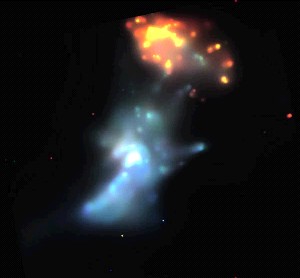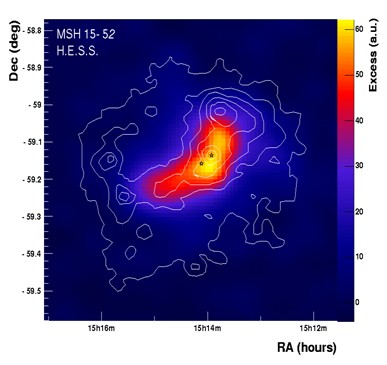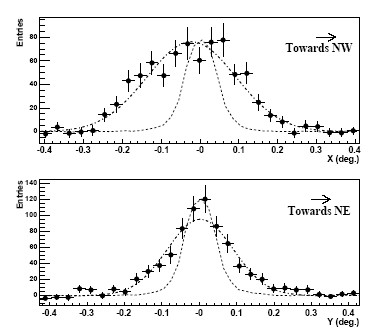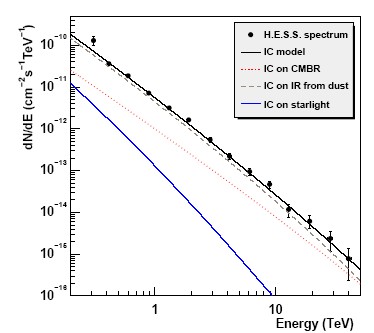MSH 15-5 2 - a Pulsar Wind Nebula with a Jet
June 2005

The supernova remnant MSH 15-5 2 was first discovered in radio observations, and forms a rather complex object. Radio observations (Caswell et al. 1981) reveal a roughly circular supernova shell 30′ in diameter with a bright feature in the North-West rim and a fainter one in the South-East. A the center of the shell, Seward & Harnden (1982) discovered a 150 ms X-ray pulsar, termed PSR B1509-58, obviously left over after the supernova explosion. The age of the pulsar is estimated to about 2000 years; it is roughly 5 kpc away from Earth. The pulsar is surrounded by a diffuse nebula of unpulsed X-ray emission, clearly seen in ROSAT observations (Trussoni et al. 1996). This pulsar wind nebula is generated by electrons accelerated in the vicinity of the pulsar, streaming away and generating a "pulsar wind termination shock", similar to what is observed in the Crab nebula.The ROSAT data already hinted a jet-like structure emerging from the pulsar, beautifully confirmed by Chandra data (see image above by Gaensler et al. 2002). In addition to this collimated outflow - most likely along the pulsar spin axis - the image shows arc-like structures North of the pulsar. Interpreted as synchrotron emission from electrons, the X-ray results suggest the presence of electrons accelerated up to energies of tens of TeV, possibly leading to VHE -ray emission through an inverse Compton (IC) process (du Plessis et al. 1995). Early observations with the CANGAROO telescope (Sako et al. 2000) yielded a marginal TeV gamma-ray signal.
With the H.E.S.S. four-telescope system, 22 h of data were accumulated on MSH 15-5 2, showing a very clear TeV gamma-ray signal with a significance of 25 sigma and a flux of roughly 15% of the flux observed for the Crab Nebula. A surprise was that the TeV gamma rays show a clearly resolved structure (Fig. 1), with an elongated and slightly curved emission region, resembling in its morphology the X-ray jet. In the north-west direction, the source has a characteristic width of 6' (assuming a Gaussian source profile) (Fig. 2), in the orthogonal direction a width of about 2', The center of gravity of the gamma-ray emission is displaced from the pulsar. The lack of symmetry, both in the X-rays and gamma rays, implies either a single-sided outflow from the pulsar, or could be the result of beaming in two jets, which suppresses emission from a possible counterjet; however, the mechanisms responsible for the emission of a high-speed jet (or jets) from the pulsar are not understood. The fact that the overall morphology is similar in X-rays and gamma rays demonstrates that the features seen in X-rays reflect the distribution of high-energy electrons rather than a peculiar structure of magnetic fields. X-ray and gamma-ray spectra can be described as resulting from a single population of electrons, radiating in a 17 microGauss magnetic field and scattering infrared photons and starlight photons to TeV energies in the Inverse Compton process (Fig. 3). Obviously, MSH 15-5 2 provides an ideal laboratory for study of the complex processes in the vicinity of pulsars, and their interaction with the ambient medium and radiation fields.
References:
Discovery of extended VHE gamma-ray emission from the asymmetric pulsar wind nebula in MSH 15-5 2 with H.E.S.S, H.E.S.S. collaboration, F. Aharonian et al., Astron. Astrophys. 435 (2005) L17-L20


